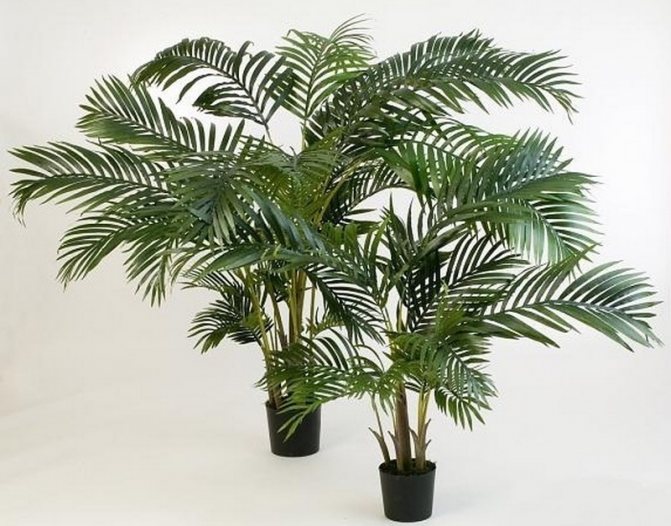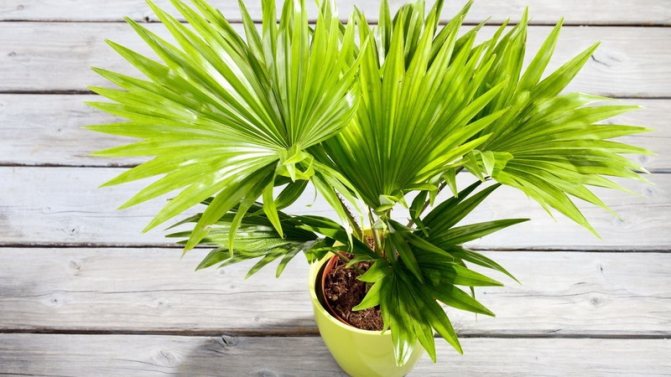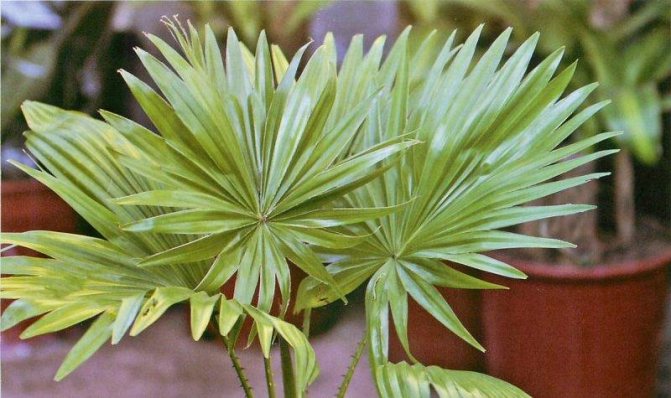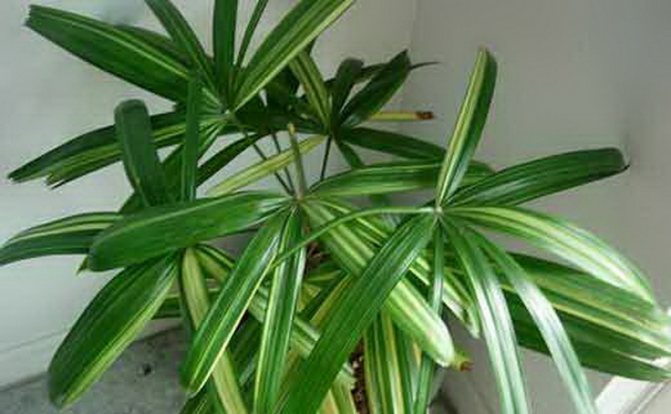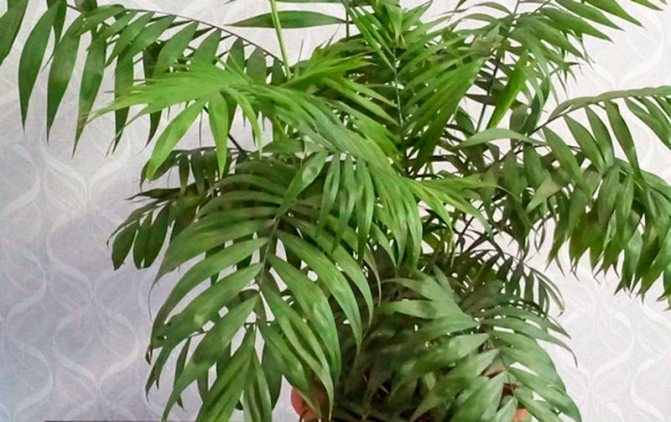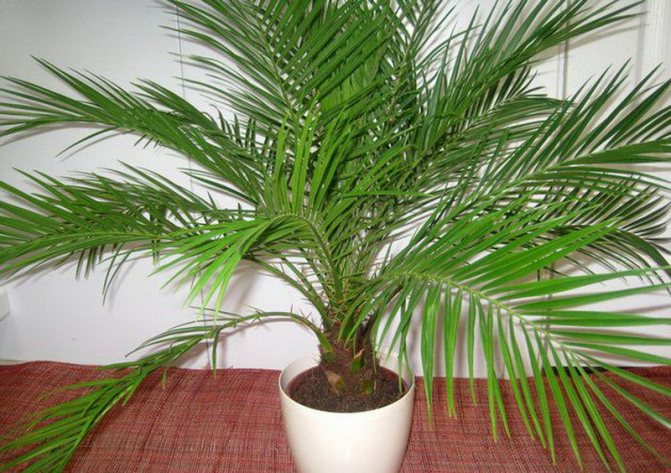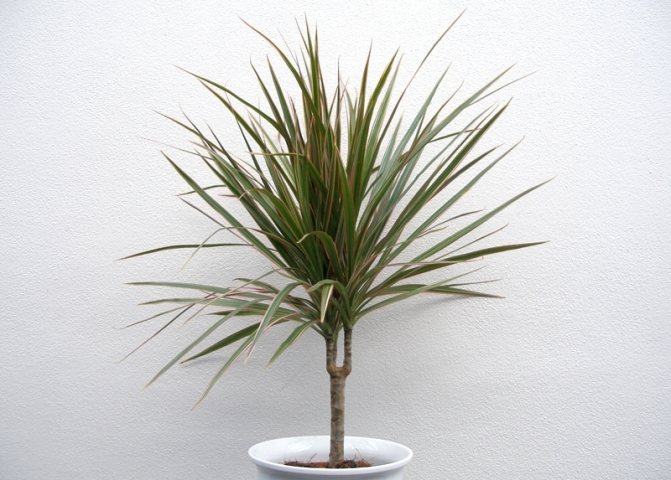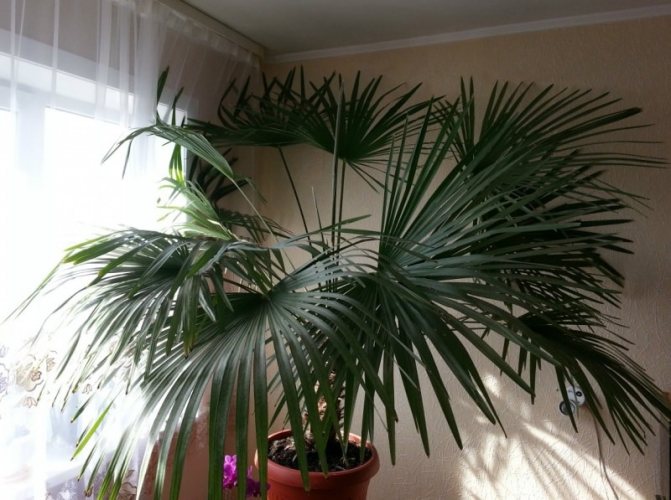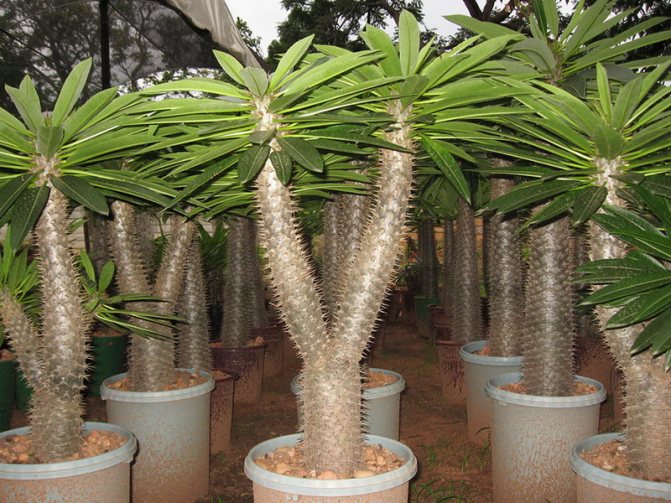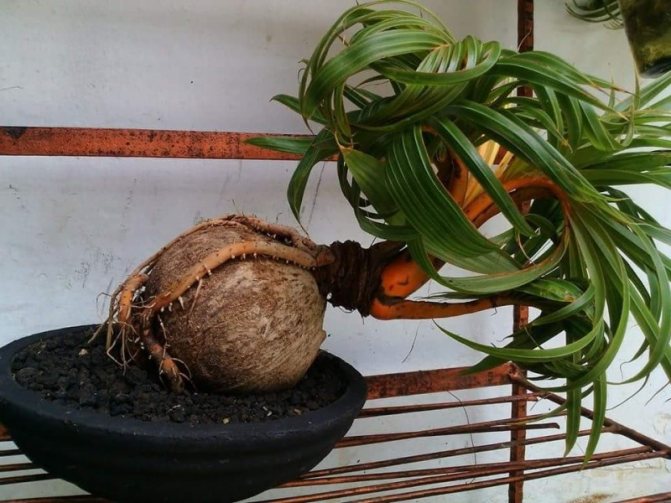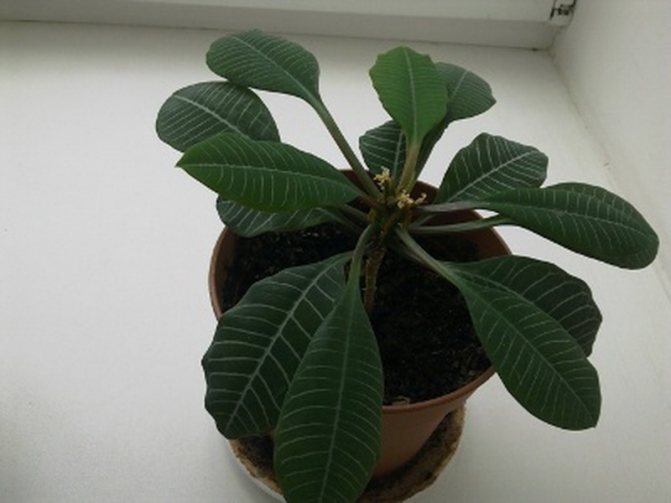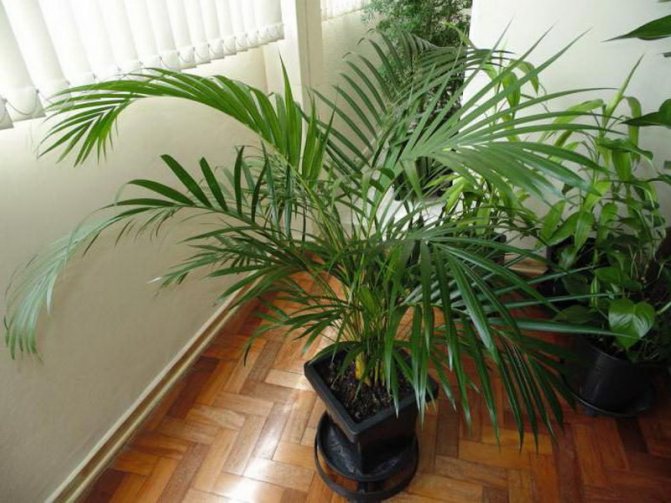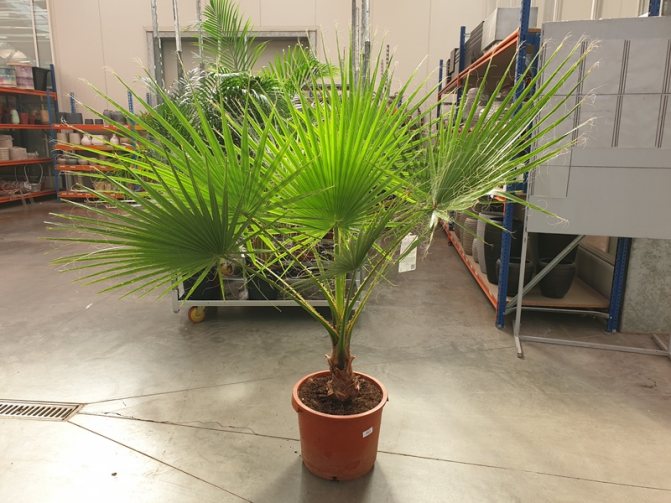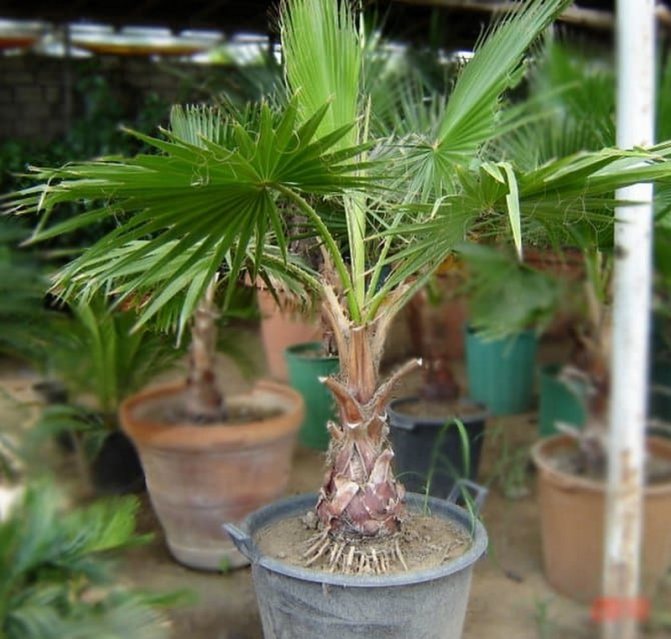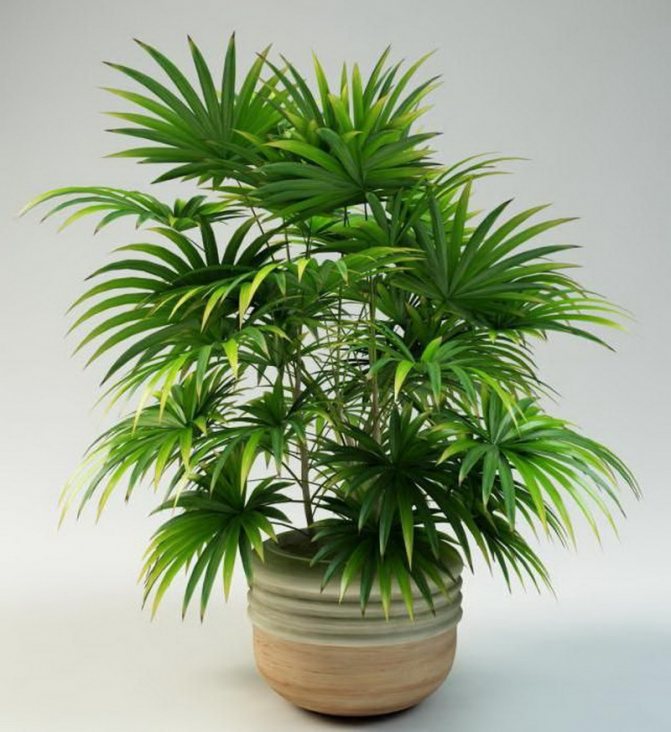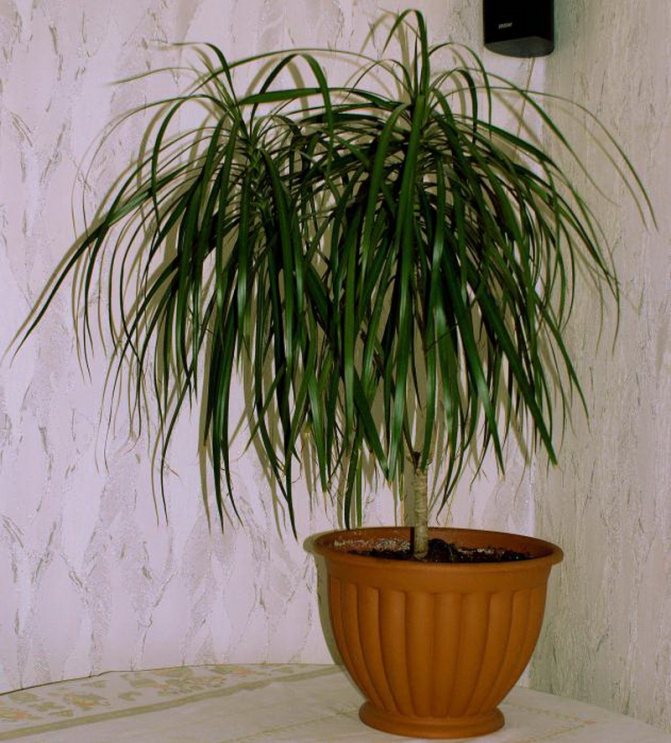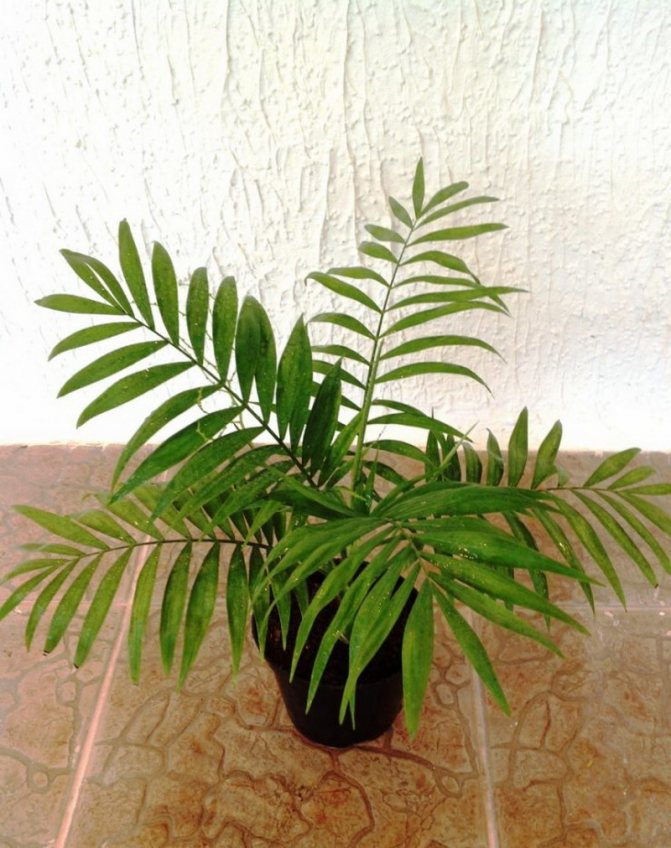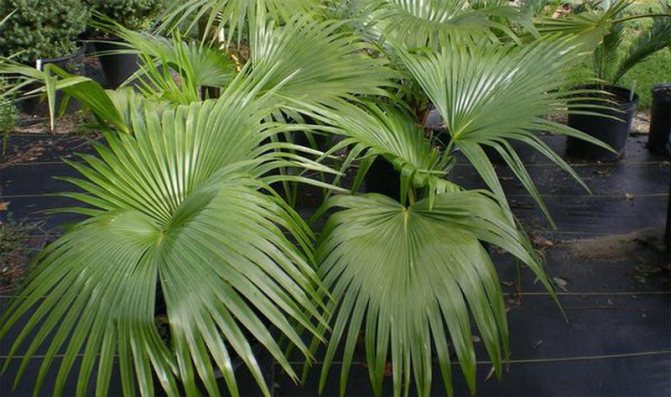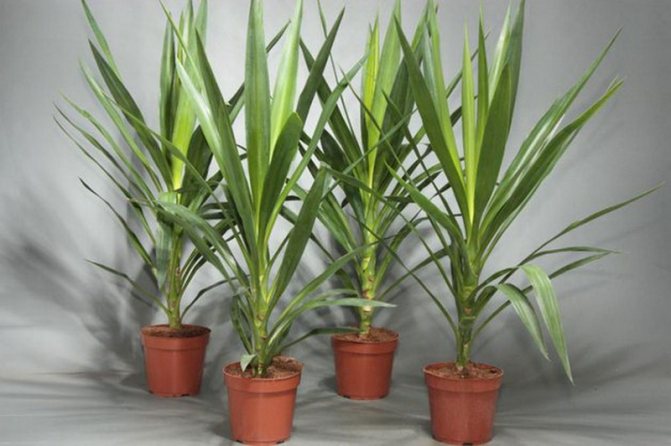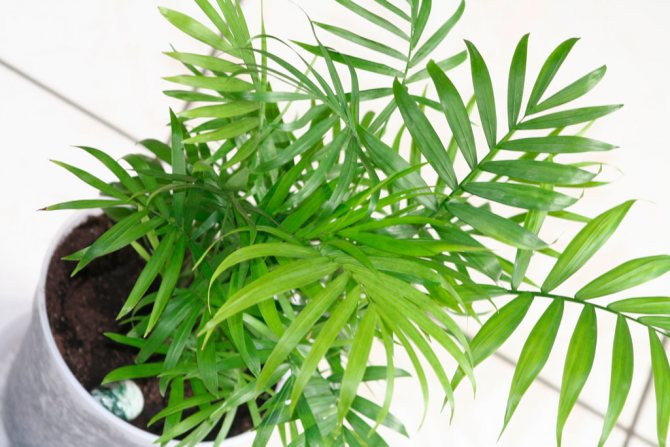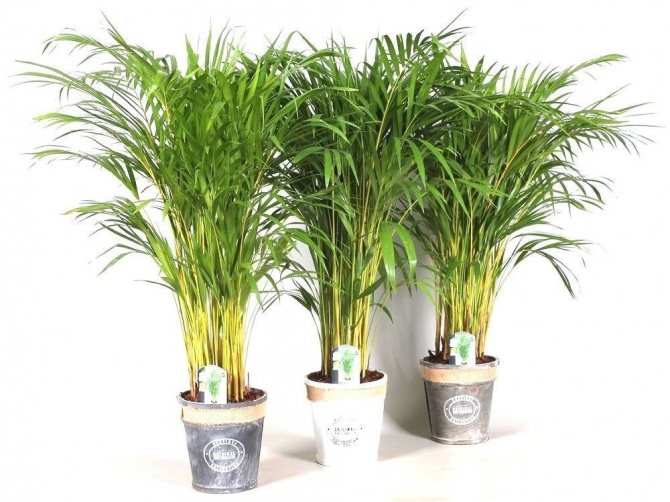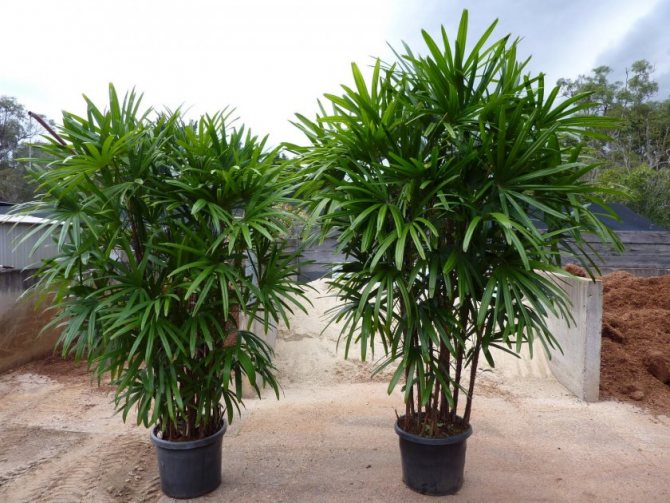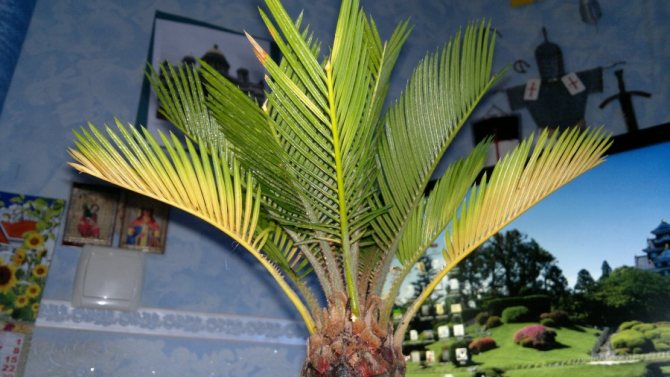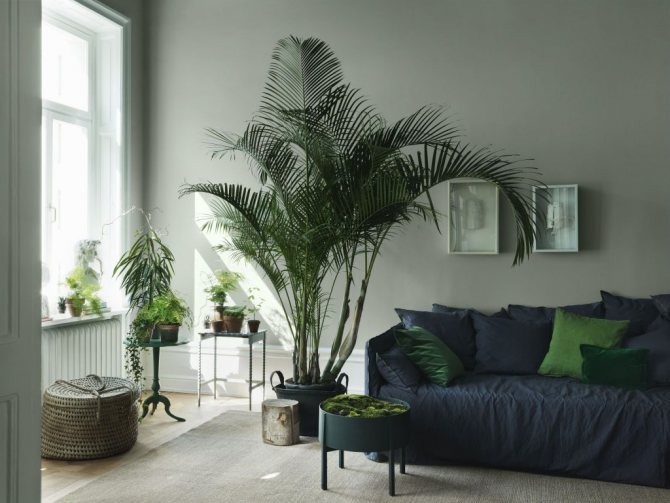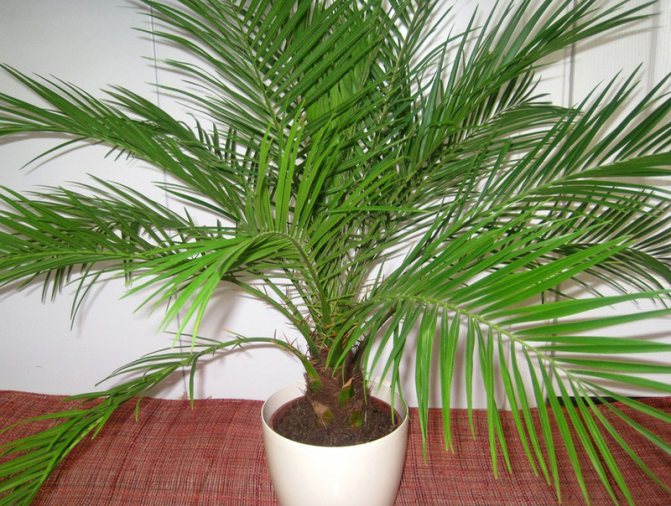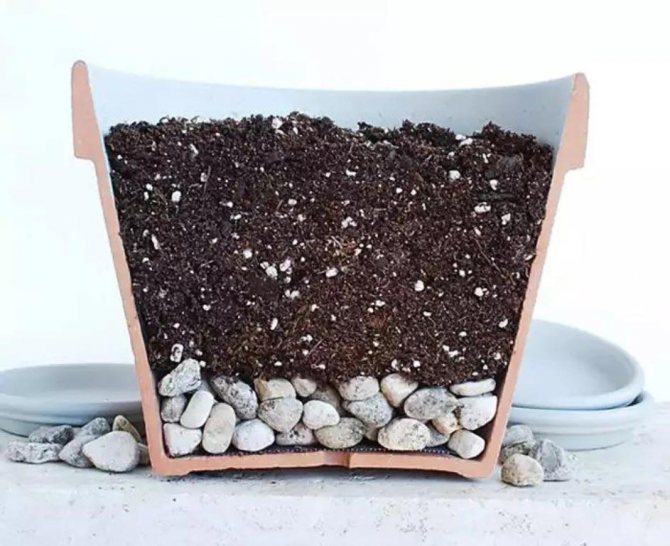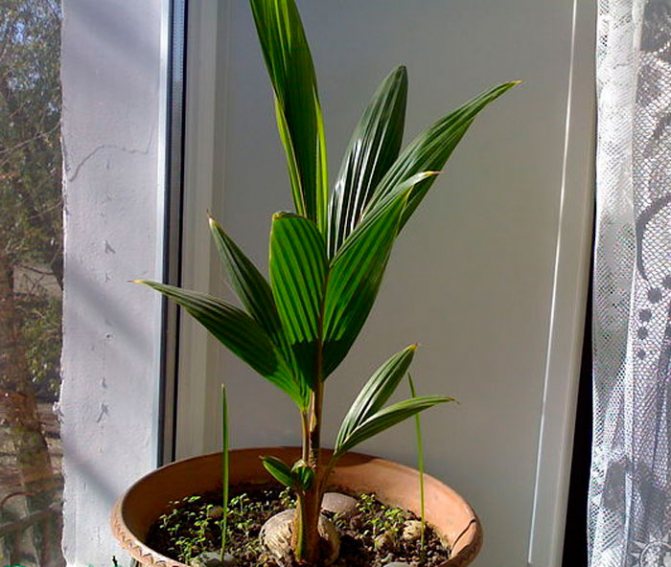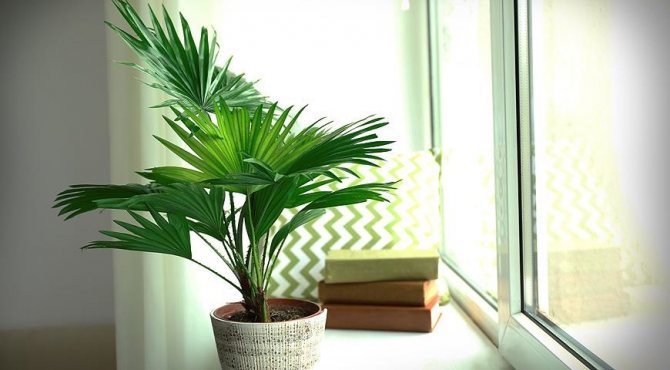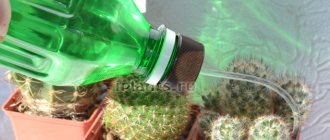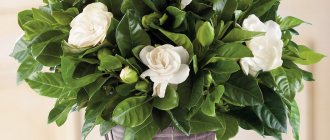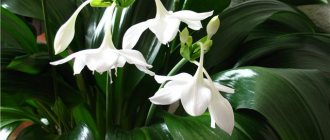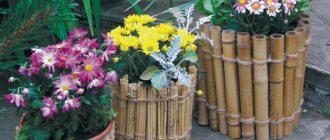As you understand from the title of our article, it will talk about how to care for such an exotic plant as a palm tree at home. Today there are a huge number of tree species, some of them are not suitable for growing, like ornamental plants, but there are also those that easily get along in the room.
Moreover, when we say "unsuitable", it only means that at home you will not be able to provide normal conditions for growing them: the level of illumination, temperature, humidity, and more.
Care and the main subtleties of growing. Palm tree at home.
Let's take a look at some of the features that will make it easier to care for this plant.
Priming
For such a plant, you need to select a soil that will constantly maintain a good level of water and air permeability. To find out if the soil you have chosen is suitable, you need to do the following check: pour water into the pot and wait, if all the water does not drain into the drainage pan for a few minutes - feel free to change the soil. Water must easily pass through the soil, otherwise it will cause rotting of the roots and the palm tree will die.
The next feature of the soil that must be taken into account when growing a tree is "transshipment". "Transfer" is a transplanting process in which a plant is transplanted into another pot along with an earthen lump.
Domestic palms: photo
Note! Decorating from wallpaper leftovers - 100 cool ideas with photos and tips!
Let's discuss this article together:
Click here to cancel reply.
Watering
Firstly, use only non-hard water for watering a tree at home; failure to do so will result in salinization of the topsoil in the pot. When watering, you need to constantly check the temperature of the water - it should be slightly higher than the air temperature in the room. If you use water from the mains, then it must be defended for 20-24 hours and only then water the plant. Do not water the tree with water that contains chlorine. The amount of water with which you water the palm tree should be such that some of the liquid drains into the drain pan.
How to care
If you are interested in indoor palms, a catalog with photos and names will tell you about their features. Anyone who wants to grow an exotic beauty at home should know about how to properly care for them:
- Be sure to irrigate regularly using soft water. This approach will prevent alkali buildup in the pot. A lot of moisture is unacceptable, as this will cause root rot. Therefore, first you should look at how dry the soil is. Only if it turns out that the upper layers have already dried up, it is recommended to resort to watering.
- If the plant lacks any trace elements, then its leaves begin to turn yellow or become stained. The plant stops growing and throws off the foliage. Rescue requires the introduction of liquid fertilizer, taken in the amount of one spoon and diluted in a bucket of water. Agricola is considered the best. The introduction of the drug is carried out three times a month. After the procedure is over, loosening should be done.In everything, a measure is required, since excessive application will lead to another problem, in which the growth of the root system and stem will slow down.
- You cannot often transplant a plant, this can only be done in an emergency. For this, a larger pot is selected. The old container is gently broken, and the plant with pieces of soil on the roots is moved to a new place of residence. Add soil to the pot and water the plant. When transplanting, in no case should you prune the roots. After transplanting, abundant watering is recommended, as this procedure is immensely stressful for the palm tree.
- You can rinse the leaves using a soft cloth and warm water. Chemical compositions cannot be used, since the leaves begin to turn yellow from them, and the plant may die.
Palm trees do not have any particular finickyness; special care is also not required.
Disease protection
Due to improper care, various problems arise with the growth and development of the palm tree. If the plant has acquired a brown or yellow color, it means that you are watering it incorrectly - either not too often, or, conversely, overflowing it. With insufficient room humidity, the tips of the leaves become dry and turn brown.
Fungal diseases are mainly caused by high temperature and humidity in the room. This is expressed in the fact that oval spots appear on the leaves. As the fungus begins to spread, the spots gradually increase in size.
To save a palm tree, you should resort to removing damaged parts and reduce the regularity of watering, you should also monitor the temperature of the room. If the reason lies in the contaminated soil, then a palm tree transplant will be required. It is also worth resorting to spraying using fungicidal preparations.
If the plant suffers from root rot, then there is a slowdown in growth, the leaves lose their color, acquiring yellowness, and some roots begin to die off. To combat this ailment, you need to purchase the drug Homecin and place a palm tree in it, leaving it for a quarter of an hour. Now the wounds of the plant are treated with activated carbon, for which the tablet is ground into powder and sprinkled on the roots. After carrying out all the procedures, a new place of residence is selected for the palm tree.
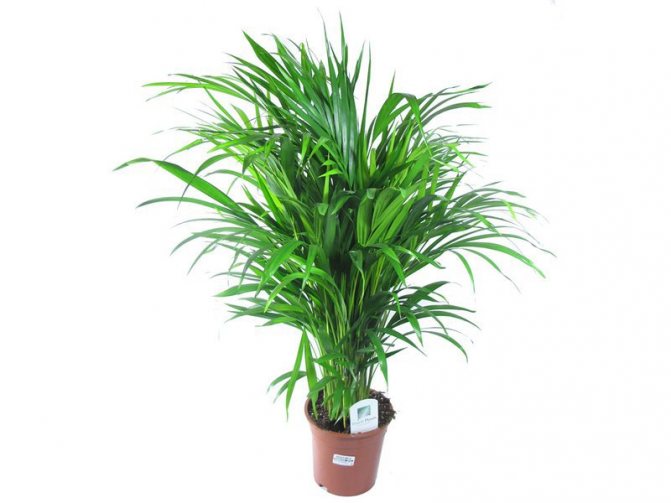
Pest control
There are several nasty insects that can harm the palm tree:
- Spider mite. This pest feeds on plant sap. The places he visited are immediately noticeable, as they are covered with a bloom of white. The fight will require the use of Vertimek.
- Mealy worms. This species multiplies very quickly, they climb into the petioles, penetrate the rhizome. At the same time, there is a drooping of palm leaves, its pallor. Pests are destroyed by Aktellik, a powerful targeted drug.
- Thrips. These are the most dangerous creatures, as they often hide in separate areas near the plant. Defeating such an opponent is difficult, but possible. To do this, it is recommended to arm yourself with Fitoverm and walk not only on the surface of a palm tree, but also on windows, containers and other things that are near the houseplant.
Due to some mistakes in caring for a palm tree, certain problems arise with the plant, it starts to hurt, and sometimes even dies... Therefore, you should pay attention to your pet and be attentive to the various manifestations of the disease, carrying out timely processing to protect the palm tree.
Moisture and care
The palm tree will grow well in conditions where the air humidity is high enough. As you understand, it is almost impossible to fulfill such conditions at home, in an apartment. If you still have the ability to ensure air humidity, you can use the following methods for this:
- place a large tray filled with liquid next to it
- use special devices for humidifying the air
- spray the tree in hot weather
For spraying, the same water is suitable with which you water the plant. In autumn and winter, it is recommended not to humidify the air - fungus may appear.
Necessary conditions of detention
Exotic perennials in the wild grow throughout the tropics and subtropics. Growing indoor palms, you need to find an individual approach to each species. However, for all members of the Arecaceae family, there are basic rules of agricultural technology.
With proper care, home palms can live from 10 to 15 years.
Tropical perennials prefer diffused light, and therefore it is better to place them on the west or east side of the house. In the morning or in the evening, flowerpots with a plant can be placed in the sun for several hours, and in winter, use a phytolamp. The bright midday sun is fraught with severe burns on the leaf plates.
A comfortable temperature for an exotic culture is the range from +15 to +30 ° С. At the same time, the soil should not be cooled below +10 ° С. Also, the exotic does not tolerate drafts and does not like dry air. To provide it with sufficient moisture, a container of water or an automatic humidifier is placed next to it. The leaves are sprayed weekly with a spray bottle or wiped with a damp sponge.
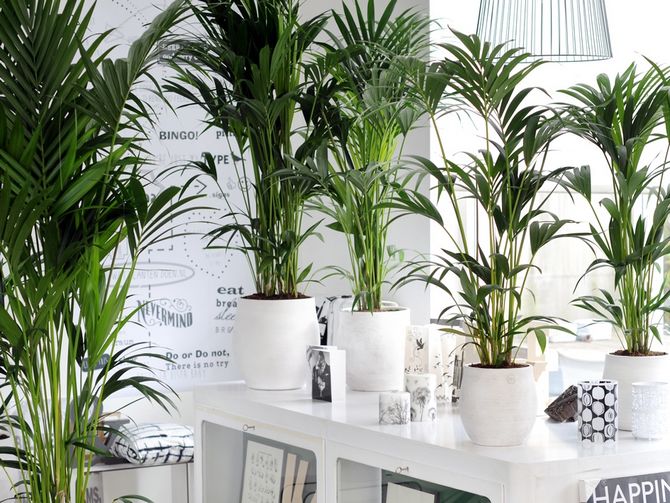

Tropical perennials prefer diffused light
Members of the Arecaceae family grow best on well-drained, nutritious, slightly acidic or neutral soils. For seedlings, you can use a ready-made substrate, but a self-made soil mixture is more suitable for adult plants. To do this, you need to mix garden soil with sand and humus. Some growers make a different composition: sand and peat mixture, dolomite flour, mineral complexes.
In order for a room palm tree to be comfortable in conditions unusual for it, a flowerpot for it must meet the following criteria:
- width is less than height;
- glazed inner walls (untreated ceramics tend to absorb moisture, and therefore the plant will have to be watered more often);
- light shades (if the color scheme of the pot is dark, the soil will quickly heat up, which will negatively affect the development of the perennial);
- proportionality of the size of the pot to the root system (tight pots will slow down growth, and too wide can provoke root rot);
- large drainage holes.
Decorative indoor views
Indoor views are not only exotic and greetings from the rainforest, they also fulfill an important detail in the interior, often changing it almost drastically. It should be borne in mind that not all palms are suitable for indoor cultivation. Most often, the following types of indoor palms are chosen for these purposes (with photos and names):
- Date. Date palms are the most common. At the moment, there are more than 17 species, in the wild they grow in Africa and Asia. If you put an ordinary date bone in a pot, it will germinate after a while. These seeds have almost one hundred percent germination, but they germinate for about a month. Literally in 5 years, a young tree will become decorative. It is best to purchase a finger date for this purpose. This species does not grow in the wild. Indoors, it can grow up to 6 m in height. True, this will take several decades. The date palms also include the Robelen date. The fruits of this plant are inedible. Palm trees have a crown with leaves that gracefully curve downward. The trunk of the plant is also original, as if shaggy.
- Areca Chrysalidocarpus. In nature, it grows in Indian forests.The crown is a huge bunch of leaves at the top of the trunks, which reach one meter in length. The trunk is covered with a large number of scars, located in the form of a ring. The fan of Trachikarpus will look very original in the room. This plant is ideal for indoor growing. The culture blooms and bears fruit. But the fastest growing in indoor conditions is Kariota. This plant is markedly different from the rest of the species. Outwardly, it resembles a triangle that stretches upward. Life expectancy is no more than 20 years.
- Washingtonia. This decorative palm tree has a crown in the form of a bright green large fan. The cultivation of this species does not require specific knowledge, the plant is unpretentious to care for.
- Coconut (rubber). This plant will be the hardest to grow indoors. It will take a lot of light to grow. A coconut tree is best suited for placement in a conservatory. In indoor conditions, two types are mainly grown: Weddel coconut and walnut coconut.
- Hamedorea (bamboo, water or cat palm). These species are ideal for indoor cultivation. Hamedorei, one-color, graceful, oblong and tall, are especially ideal for these purposes.
- Liviston. These plants have been grown in indoor culture for several centuries. They are very decorative, small, but they need special conditions to grow successfully.
- Rapis. Unpretentious and slow-growing bushy palms with soft dark green leaves. Ideal for indoor cultivation. They easily endure all the inconveniences: dry air, poor lighting and drafts. Outwardly, they are very similar to Rapis Kentia, which can also be easily grown indoors.
- Hameropsi. These houseplants are widespread, very decorative and unpretentious, grow slowly. Over time, the trunk grows overgrown with brown fibers, the leaves are feathery, with thorns.
One of the most capricious is Butea, but if you find an approach to it, the plant will delight you with a surprisingly graceful crown with feathery leaves.
Rare species include Gioforba. Outwardly, the plant is a small palm tree, with peculiar leaves and a trunk that resembles a bottle at the bottom. Another rarity is Sabal, which is home to the subtropics of America. The plant is not tall, the leaves are gray-green, grow on short petioles.
And only passionate palm lovers know about the Bethel variety, which is distinguished by beautiful large trunks and a lush crown. In its natural habitat, the palm grows up to 20 m in height, and also has two-meter leaves. In indoor conditions, it can grow for a long time, but at the same time it has a more modest size.


